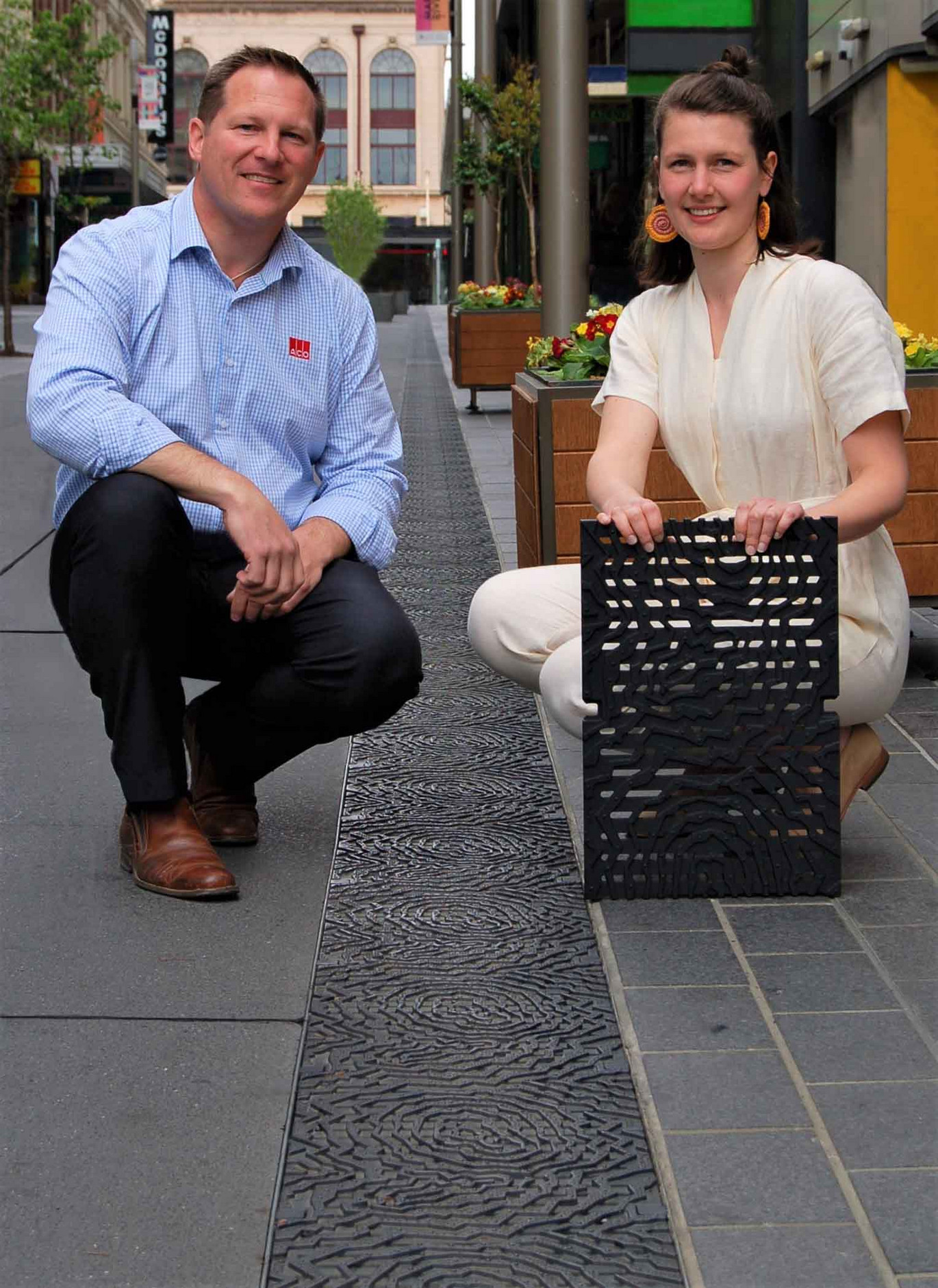The non-slip design channel
A project from ACO Australia
ACO cast iron gratings have set Freestyle accents in drainage in two major Australian projects.
The Market to Riverbank link is a government project to redesign the main streets in Adelaide with the aim of creating a vibrant connection between the Central Market and the Riverbank. The aim of the designers was to create a picturesque route for pedestrians and cyclists, with paved footpaths, shaded by leafy trees, with public art installations, special illumination and street furnishings.
The designers hired artist Amy Joy Watson to develop the design of the channel inspired by the natural shapes of mineral deposits (geodes) − a reference to the geological history in this special region. "As if excavated by archaeologists, the ribbon-pattern flows through the grating covers and seating elements, and appears to reveal traces of ancient landscapes and rock formations," says Amy Joy Watson. The second project is a six-storey building to be built on the site of the Faculty of Arts and Social Sciences (FASS) of the University of Sidney. The gratings were installed at the top as well as the bottom of the stairs, which creates the appearance of the drainage flowing down the steps between the levels. They highlight designs of eye-catching aboriginal art.
For both projects, the designers paid special attention to the principle of non-slip surfaces. ACO cast iron gratings of Freestyle type are part of the ACO Australia Heelsafe® anti-slip strategy.
A limit for the non-slip properties of both types of gratings was therefore specified. In the case of the geode type gratings, models had to be made using 3D printing methods to enable comprehensive slip tests to be carried out before the design could be approved. The final cast iron units also had to pass non-slip tests.
